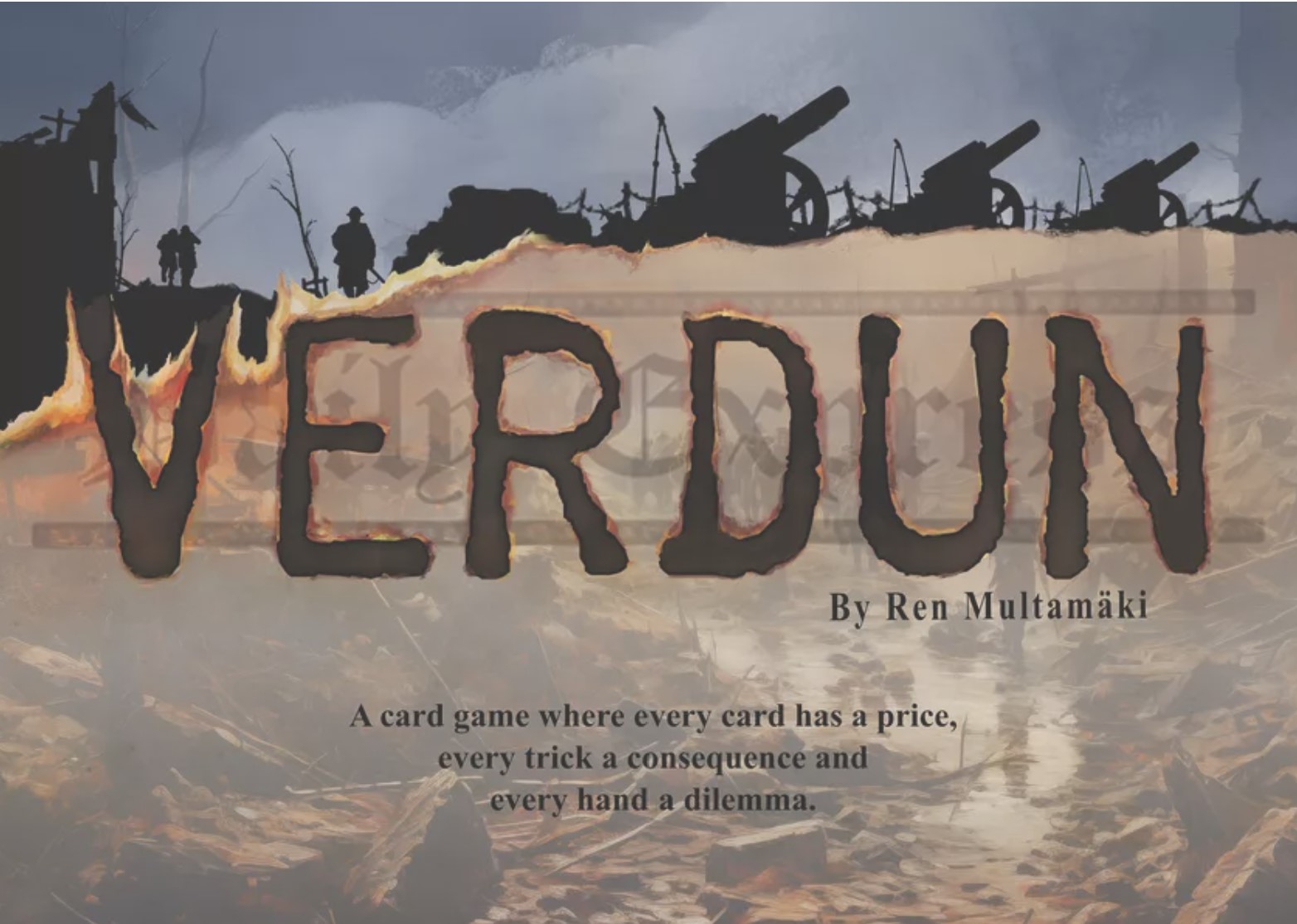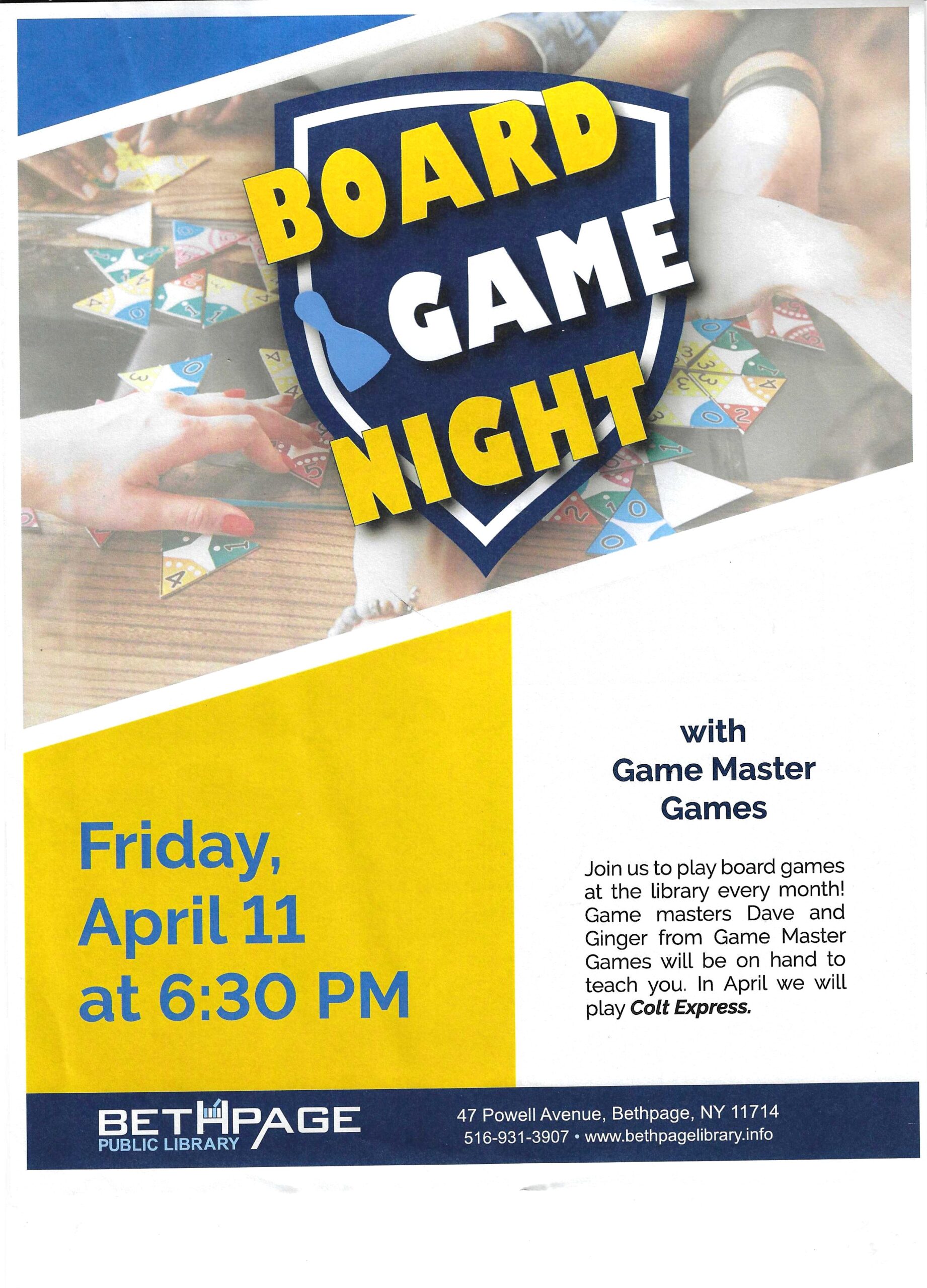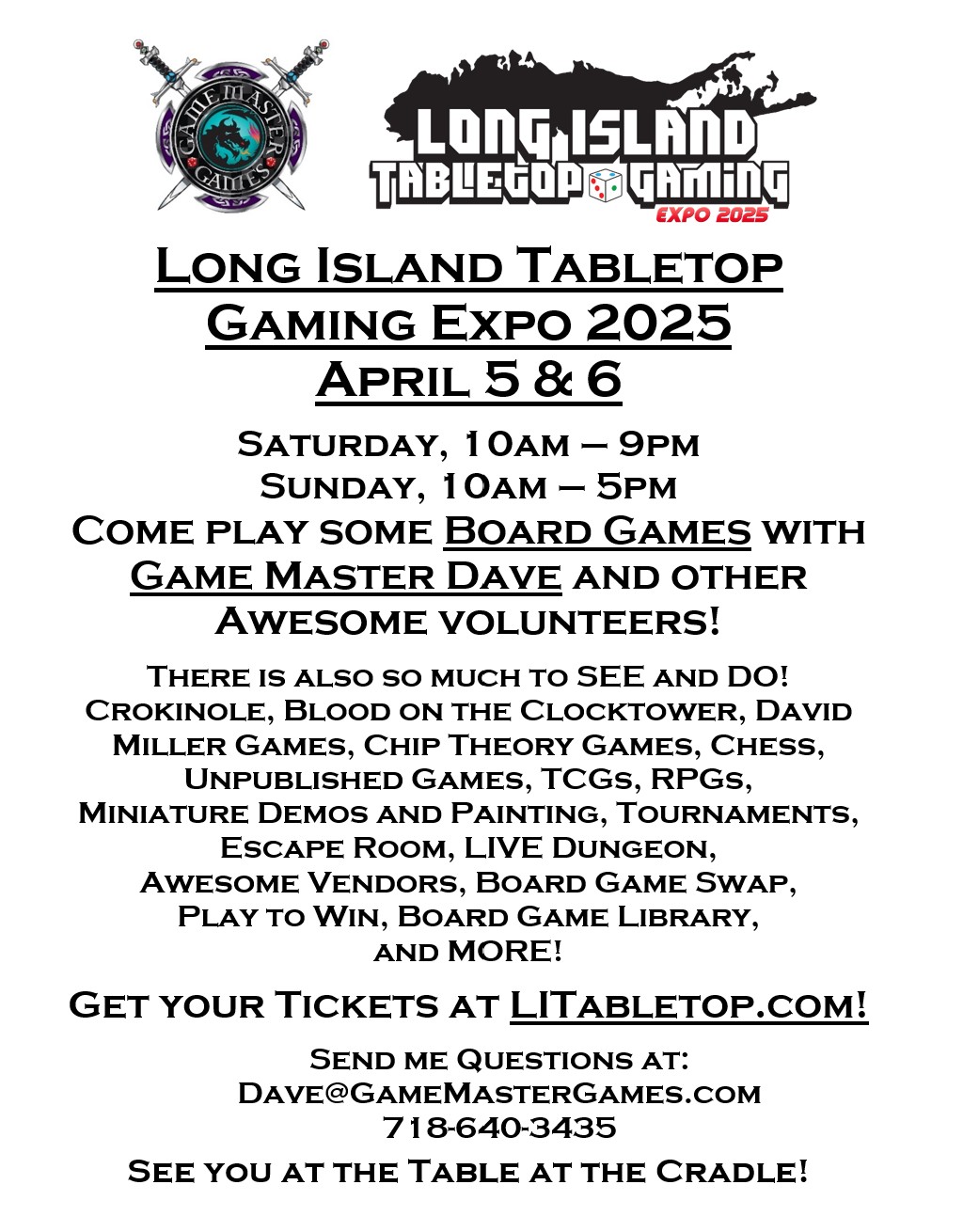“Making friends and uniting communities one wargame review at a time.”
Good day gamers,
Board Gamers Anonymous Podcast gave me an opportunity to review a new wargame by Dragon Dawn Productions, Verdun.
Check out the review on their website HERE.
Check out the Verdun Kickstarter HERE.
I’ll copy and past the review down below or you can just click on the website link above.
Send me some feedback about my review if you like HERE.
See you soon!
- Game Master Dave

Verdun Review
“Last week we attacked in sector two against the German fortifications there and even though we made it into their trench, the fortification was too strong. We retreated back with moderate losses. Today, our intelligence suspected the Germans received a shipment of mustard gas, so we attacked as soon as possible, but this time in sector three. We went over the trench at the sound of the lieutenant’s whistle. We made excellent progress across ‘no man’s land’, but just before we reached the German wire, a tremendous barrage of heavy guns rained down on my fellow soldiers. This stalled our advance. I was lucky to be wounded only twice as I made it back to our trench. I have lost all my comrades. When will this war end?” – Sergeant Jerome Allard, French 97th Infantry Division
(Note: I was provided a review copy of Verdun by the publisher, Dragon Dawn Productions.)
As a military historian and an avid wargamer, I was deeply honored to receive a copy of Verdun by Dragon Dawn Productions for review. The Battle of Verdun was a World War I battle fought between the French and German armies from February and December 1916, making it one of the longest battles of the entire war. Fort, like Douaumont, Vaux, and Souville, exchanged hands several times during the battle, and the forts were costly in men and material to capture. During the battle it is estimated that both sides lost 700,000 casualties (dead, wounded, and missing) combined. The game Verdun captures this ebb and flow of the actual battle through game play. The heavy loss of soldiers is also represented.
Verdun is basically a ‘trick-taking’ game. Each side takes turns being the attacker and launching their ‘troops’, represented by cards, out of their trench line to attack a chosen fortification of the opposing player. It can be played 2-player or 4-player and there is a distinctly different play style for each option. The game play is quite different depending on the number of players, and you can’t quite get the feel of those differences until you actually play. The attacker’s basic objective is to play two cards of the highest value to capture the asset hidden behind the defender’s fort. The defender is trying to get a higher value number with their faction’s cards, including the defense number of the fortification to stop the attack. After potential casualties are figured out, then the defender becomes the attacker, and another battle/trick is started. There is one wooden token in the game, a whistle, which reminds the players of that much anticipated and dreaded whistle that led so many young men to leave the relative safety of the trenches and start an attack.
The initial set-up of Verdun includes five fortifications of differing defense values facing the opposing faction. They line up across from each other like the front-line trenches in WWI. They are placed with the numeric value side down, so it is hidden from the other faction. Each side has five assets to protect. These assets are placed value side down behind a fortification. Each of these assets has a different victory point value and will be the target of the opposing player. These assets range from a Decoy worth 1VP to the HQ for 7VP. This part of the game reminds me of Stratego, where one secretly hides their flag, leaders, and bombs on their side of the board.
There are two decks of cards in the game. The first deck of Troop cards is colored black for German and red for French, and there values range from 2-13 which represents their troop strength. This deck includes specialty cards for each side as well as green colored cards which can represent either player’s color. The second deck consists of tactical cards that need to be earned by winning a battle/trick. These cards can swing the fate of any battle/trick one way or the other, including adding to the casualty count. Each player’s hand will most likely consist of cards of both factions.
On a player’s turn, they will place the whistle on a defender’s fortification signaling the target of attack for that battle/trick. The attacker will play a card, followed by a card of the defender. Then a second card will be played by the attacker and a final second card by the defender. During any card play, if one has a tactical card from winning a previous trick, one can play that attached to a card that is played. The tactical cards are very dynamic and will dramatically change that battle. Once all cards are played, the values of each faction’s cards are combined, no matter who played them. If the attacker has a higher total, the fortification is turned over and the value of the fortification is added to the defender’s total value. If the attacker still has a higher total, the attacker captures the asset behind the fortification, which is worth victory points. Before or after revealing the fortification, if the defender now has a higher total, the attacker loses the trick. Then casualties are resolved. Each card has one or more skulls represented on the side of the card. The winner of the trick puts into their casualty pile their lowest value faction card which usually has the least number of skulls on it. The loser of the trick puts their faction card with the highest value, which usually has the most skulls on it into their casualty pile. Then a tactics card is awarded to the winner of the battle/trick, up to a maximum of two per player. The game ends when the maximum number of battles/tricks have been played. (This is different depending on the number of starting cards in a 4-player game, or until cards run out in a 2-player game.) At game end, victory points for captured assets, plus any assets still protected by your fortifications on your side are added together, but the number of skulls on the cards in your casualty pile are subtracted from your score. In all the games I played, this led to a negative score. The player with the highest score or least negative score is the winner.
The first thing I noticed about the game Verdun is that the main strategy seems to be a ‘cat and mouse’ style of play. There are multiple factors to consider with each play of a card. Initially, you don’t know the values of the fortifications of your opponent, so you will need to do ‘probing attacks’ to try and at least get above the defense value of your opponent’s cards, so you can flip the fortification token over. Even if you don’t win the trick when that fortification total is added to the defense, you see the value of it and this could help with future decisions of what your next target fortification should be. Did the opponent put their highest value asset behind the highest value fort? Who knows? You must keep playing to find out. The second thing to consider is what cards to play. On average, about half your hand will be cards from your opponent’s faction, meaning you eventually must play some of their cards, adding to their trick values. The tough decision then is when to play them. Of course, you want to play your strongest cards against fortifications you think you can beat, but you will need to watch if your opponent has a Tactic card or two, because the Artillery or Mustard Gas cards can lead to massive casualties which may cancel out any victory point gains by grabbing an opponent’s asset. The game will end in your victory if you grab all the opponent’s assets, but in my playtesting, we ran out of cards before that happened.
Here are two points of the game that I think are reflective of the actual strategy of the leaders in the First World War: surprise the enemy with unexpected card play, and mitigate casualties by losing cards with the least number of skull symbols possible. It is almost a guarantee that you will negative points on every trick, so just minimize the damage as much as you can with intelligent and tricky card play. This is not an easy game to master. However, these strategies lead to interesting game play and some surprising outcomes, which makes the game fun.
Here are the things I really liked about the game:
– The whistle token is great.
– The troop card artwork is fantastic as each card is a different realistic looking poster from World War I representing an enlistment notice or advertisement to buy war bonds. As a historian, I appreciate this choice.
– The difficult decision making in card choice and timing was intriguing to me and ‘scratched an itch’ for another game somewhat similar game to Air, Land, and Sea. I liked this part of the game immensely. After playing the game multiple times, I honestly can’t say I have developed a good strategy, because the choices and outcomes are so varied. Sometimes I played by feeling, but that is not a bad thing. I also developed a little card counting strategy, which helped.
– The 4-player version is unique, because as you choose a card for the current board state, your faction partner may not see your intended strategy and play a card you were completely unexpecting. This chaos potentially represents the many leadership challenges that happened during the actual war.
Here are things I wish were different about the game:
– I have not seen a game ending with a positive score yet, due to the immense number of casualty icons in your discard deck. Granted, this does represent the immense tragedy of World War I, where you might gain your objective, but still lose a generation of young men. However, Ark Nova eventually changed their scoring due to a backlash from the public about the perceived difficulty of math and negative scoring.
– The rulebook did not cover several situations I found myself in during game play. Perhaps something was lost in the English translation, or I received an earlier version of the rules, but I’ll send some separate notes to the manufacturer about some suggested changes.
All in all, I would rate Verdun as a Play.
I enjoyed it, but personally, I’m an Avalon Hill Games, GMT Games, and a Columbia Games player. I like a lot more historical strategy decision making that said, I think Verdun does captures a sense of the horror of actual World War I battles where even if it is possible to win, you still lose.



